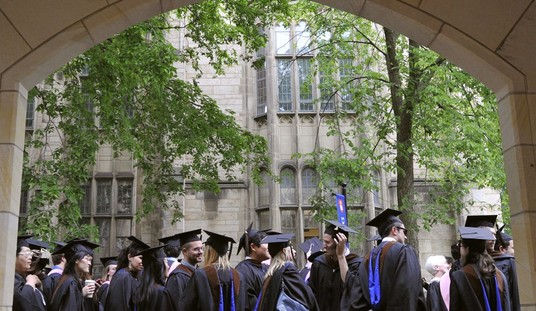Going into today’s jobs report from the Bureau of Labor Statistics, there have been several rounds of good economic news, from ADP’s 215,000 private-sector jobs added to a strong ISM manufacturing index of 57.3. Gallup’s measure of adult unemployment, an increase to a seasonally-unadjusted 8.2% from October’s 7.3% and last November’s 7.8%, was the outlier in this week’s economic news.
The predictions from the expert economists ranged from 180,000 jobs added and a 7.2% unemployment rate at Reuters to a 185,000 jobs added and a 7.2% unemployment rate at Bloomberg.
As CNBC’s Rick Santelli says, the survey says…:
The unemployment rate declined from 7.3 percent to 7.0 percent in November, and total nonfarm payroll employment rose by 203,000, the U.S. Bureau of Labor Statistics reported today. Employment increased in transportation and warehousing, health care, and manufacturing.
Household Survey Data
Both the number of unemployed persons, at 10.9 million, and the unemployment rate, at 7.0 percent, declined in November. Among the unemployed, the number who reported being on temporary layoff decreased by 377,000. This largely reflects the return to work of federal employees who were furloughed in October due to the partial government shutdown….
Establishment Survey Data
Total nonfarm payroll employment increased by 203,000 in November. Job growth averaged 195,000 per month over the prior 12 months. In November, job gains occurred in transportation and warehousing, health care, and manufacturing.
The return of the federal workers accounted for nearly half of the 818,000 increase in the number of employed from October to a seasonally-adjusted 144.4 million, and the entirety (and then some) of the decrease in the number of unemployed of 365,000 to a seasonally-adjusted 10.9 million.
While the labor force participation rate increased by a seasonally-adjusted 0.2 percentage points to 63.0%, it is still 0.6 percentage points lower than it was in November 2012 and 0.2 percentage points lower than where it was in September.
Between October and November, part-time workers increased by 174,000 to a seasonally-adjusted 27.5 million. Those who claim to be part-time due to economic reasons declined by 331,000 to a seasonally-adjusted 7.7 million. Those who last looked for work between 5 and 52 weeks prior to mid-November but want to work declined by a seasonally-unadjusted 409,000 between November 2012 and November 2013 to 2.1 million. Those factors drove the U-6 unemployment rate down to 13.2%
Going back to September to take the effects of the partial government shutdown out of the equation, the number of employed increased by only 83,000, while the number of unemployed decreased by 348,000, which explains the continued labor force participation rate drop. Part-time workers accounted for 47,000 of that 83,000 employment increase, though those who claim to be part-time due to economic conditions decreased by 207,000.
On the establishment survey side, the private sector provided 196,000 of the 203,000 non-farm payroll increase. Transportation and warehousing contributed 30,000 of that increase, manufacturing 27,000, retail trade 22,000, and temporary help services 16,000.
The average hours worked per job crept up by a seasonally-adjusted 0.1 hours to 34.5 hours for all workers and 33.7 hours for production/non-supervisory workers.








Join the conversation as a VIP Member